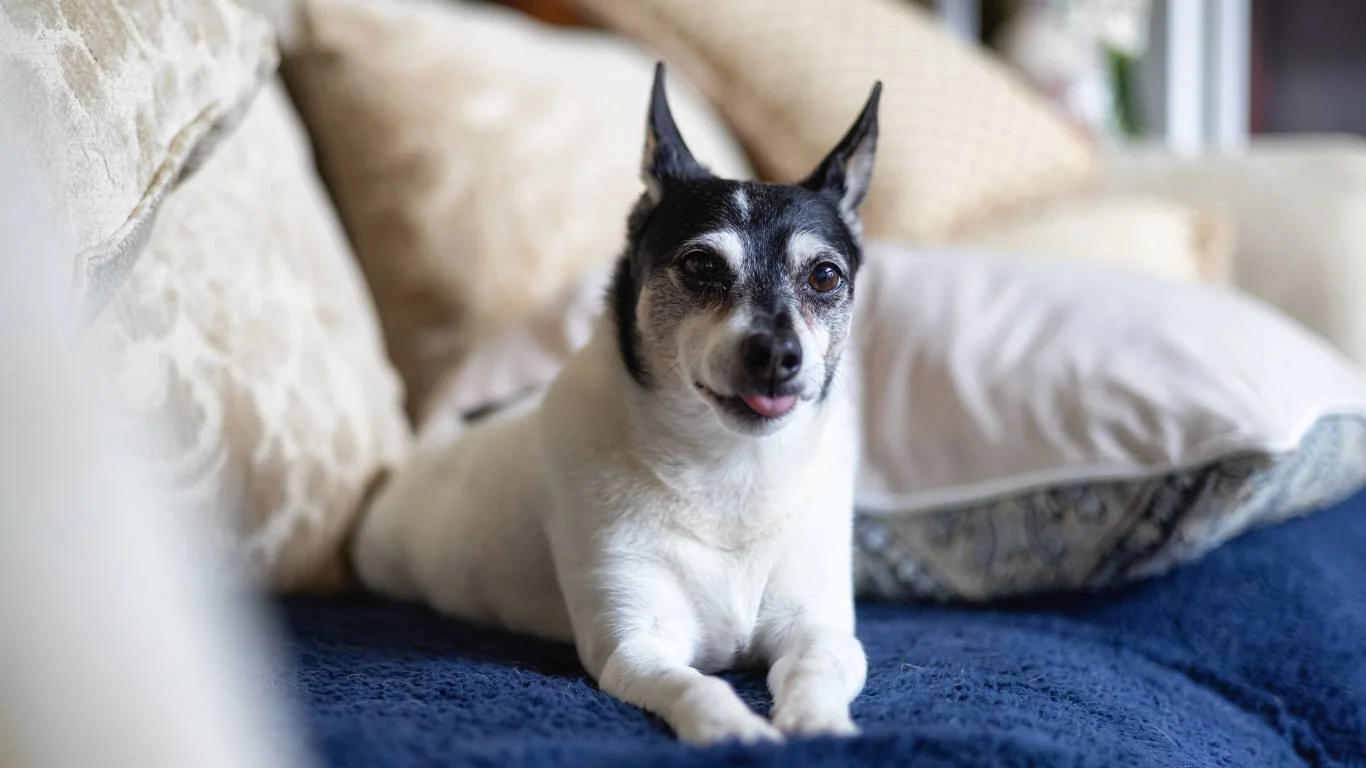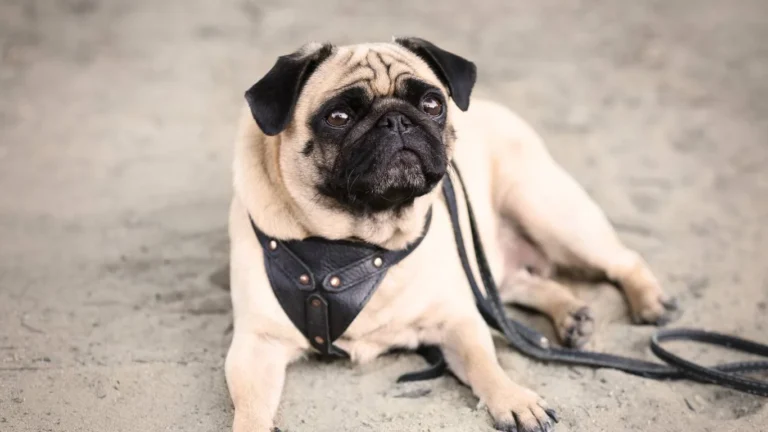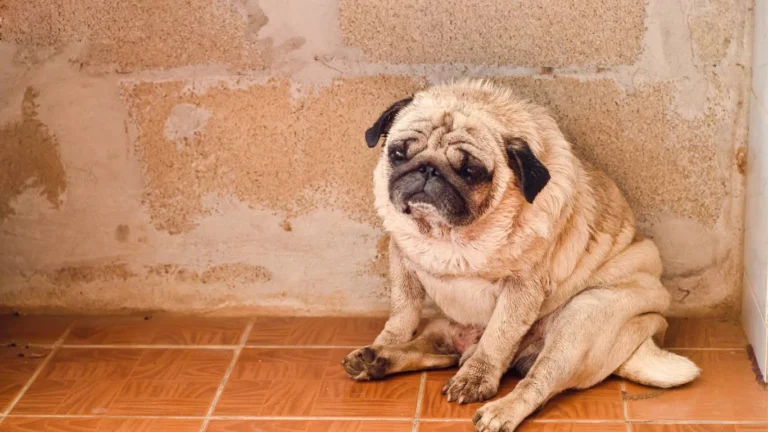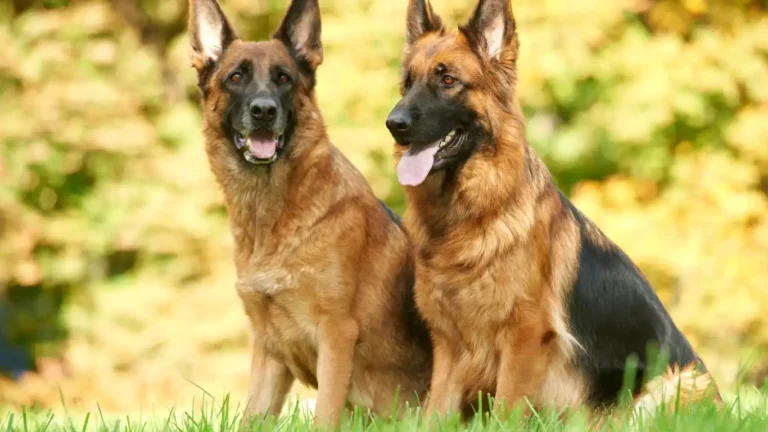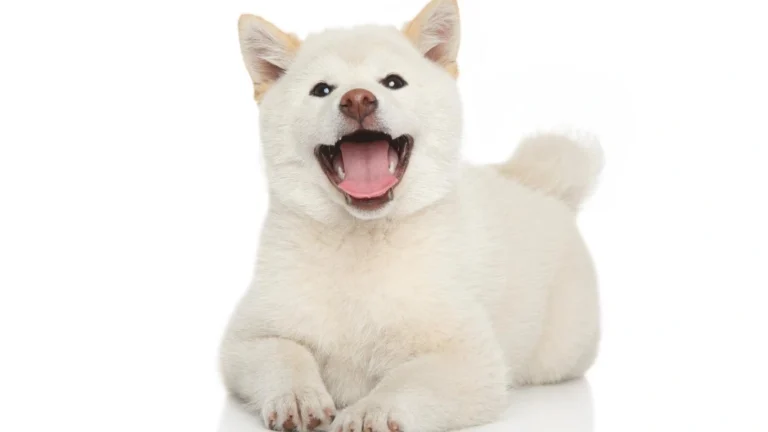Why Does My Dog’s Belly Look Bloated? Causes and Solutions You Must Know
As a Veterinary Assistant with a focus on pet nutrition, one of the most common questions I get asked by concerned pet owners is, ‘Why does my dog’s belly look bloated?’ It’s not uncommon to notice your dog looking a little “off,” especially when their belly seems unnaturally enlarged or swollen. Whether it’s after a large meal, during the course of their regular playtime, or even for seemingly no reason at all, a bloated belly can be both a confusing and worrying sign for dog owners. I’ve worked with countless pets over the years, and I’ve seen all sorts of situations involving bloating, from minor cases that were easily addressed to more severe situations requiring immediate medical attention. So let’s dive into this and see what might be causing your dog’s belly to look bloated and when it’s time to get help from a vet.
Understanding Dog Bloating: What You Need to Know

When we talk about bloating in dogs, we are usually referring to gastric dilation-volvulus (GDV) or simply “bloat,” a condition where the stomach expands due to excessive gas or fluid buildup. The stomach can even twist on itself, which can quickly become life-threatening if not treated right away. It’s important to note that bloating isn’t the same thing as having a full belly after a big meal or drinking a lot of water. Instead, we’re talking about an actual medical condition that needs to be addressed before it leads to serious complications.
What Are the Signs of Dog Bloating?
It’s pretty easy to spot the signs of bloating in dogs, especially if you know what to look for. If you see your dog’s belly looking larger or rounder than usual, it might be time to start paying closer attention. Here are some of the more common signs of bloating that you should keep an eye out for:
- Distended abdomen: A visibly enlarged or tight belly is the most obvious symptom.
- Restlessness: Dogs that are bloated often can’t get comfortable, so they might pace around or seem agitated.
- Unsuccessful attempts to vomit: If your dog is trying to vomit but nothing comes up, this could be a sign of bloating.
- Excessive drooling: Salivation can increase due to nausea or discomfort.
- Rapid breathing or panting: Difficulty breathing or shallow panting is another red flag.
- Weakness or collapse: In severe cases, a bloated dog may appear lethargic or even collapse due to shock.
If you notice any of these signs, it’s crucial to contact your vet immediately. Time is of the essence in preventing more serious complications.
Common Causes of Bloating in Dogs
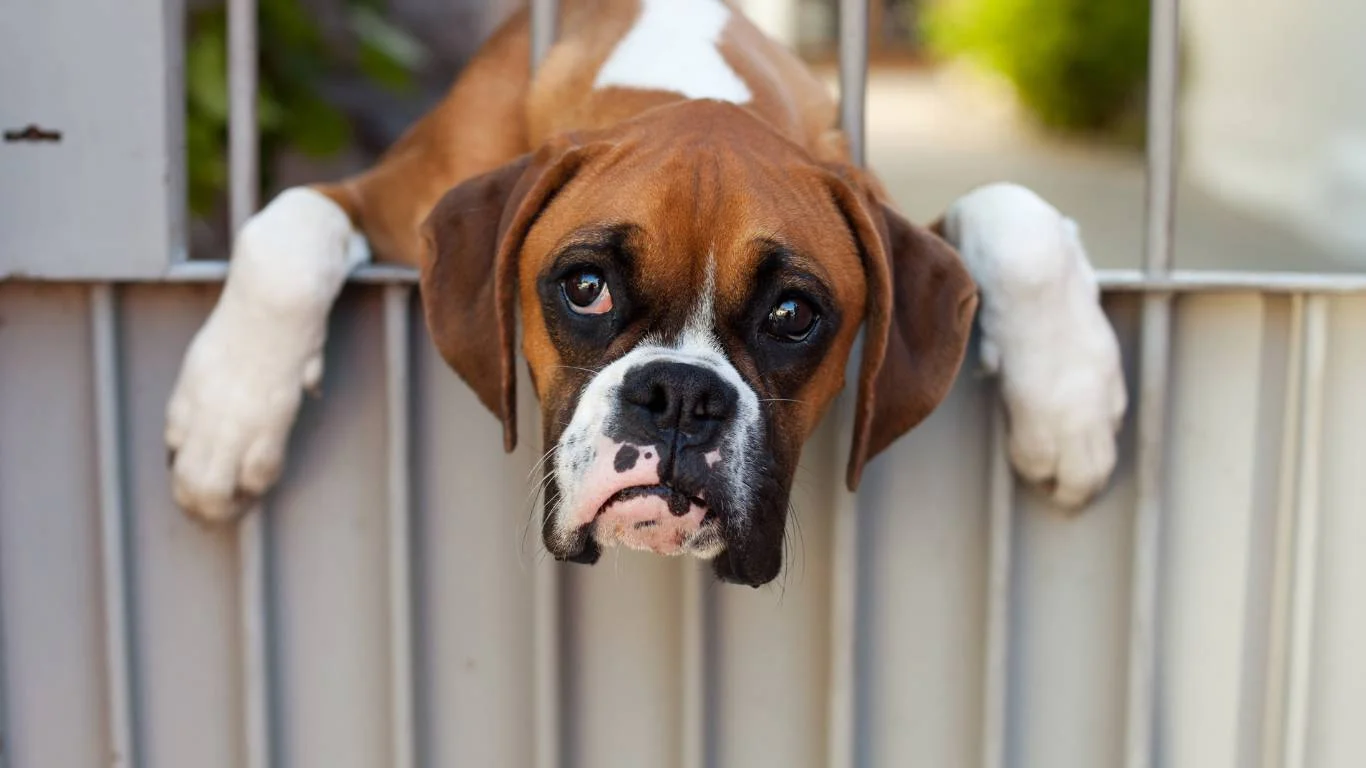
There are a variety of reasons why a dog might experience bloating, ranging from something as simple as overeating to more complex medical conditions. As a veterinary assistant, I’ve seen different causes behind the bloating, and some are easier to fix than others. Let’s break down the most common culprits:
1. Eating Too Quickly
If your dog tends to gulp down their food at lightning speed, they might be swallowing a lot of air along with their food. This can cause the stomach to expand and lead to bloating. This is more common in certain breeds, such as Greyhounds, Doberman Pinschers, and Boxers, which have a deep chest cavity. One way to slow them down is to use a slow feeder bowl or puzzle feeder. These are designed to make it harder for your dog to scarf down their food in a matter of seconds.
2. Overeating or Eating the Wrong Foods
Some dogs will simply eat more than they should, whether it’s from their regular food bowl or snacking on something they shouldn’t have. Overeating can put excess strain on their digestive system, leading to bloating. Certain types of food—especially those that are high in fat or protein—can also cause indigestion or gas buildup, leading to discomfort or bloating.
3. Gastrointestinal Issues
For some dogs, bloating can be a sign of underlying gastrointestinal issues, such as inflammatory bowel disease (IBD) or gastric ulcers. These conditions can cause irregularities in digestion, which could lead to bloating. If you suspect this is the case, your vet might need to run some tests to rule out any chronic digestive disorders.
4. GDV (Gastric Dilatation-Volvulus)
As mentioned earlier, one of the most serious causes of bloating in dogs is GDV, or the twisting of the stomach. This is an emergency situation that can kill a dog within a matter of hours if not treated promptly. While the exact cause isn’t always clear, GDV is more likely to occur in large, deep-chested breeds, especially after eating large meals or drinking excessive amounts of water. The symptoms are usually quite severe, and immediate medical attention is necessary.
5. Pregnancy
If your dog is pregnant, it’s completely normal for her belly to become bloated as her puppies grow. However, this isn’t typically a cause for concern unless other signs of distress are present. It’s always a good idea to have a vet check her out to make sure everything is progressing as it should be.
When Should You Be Concerned?
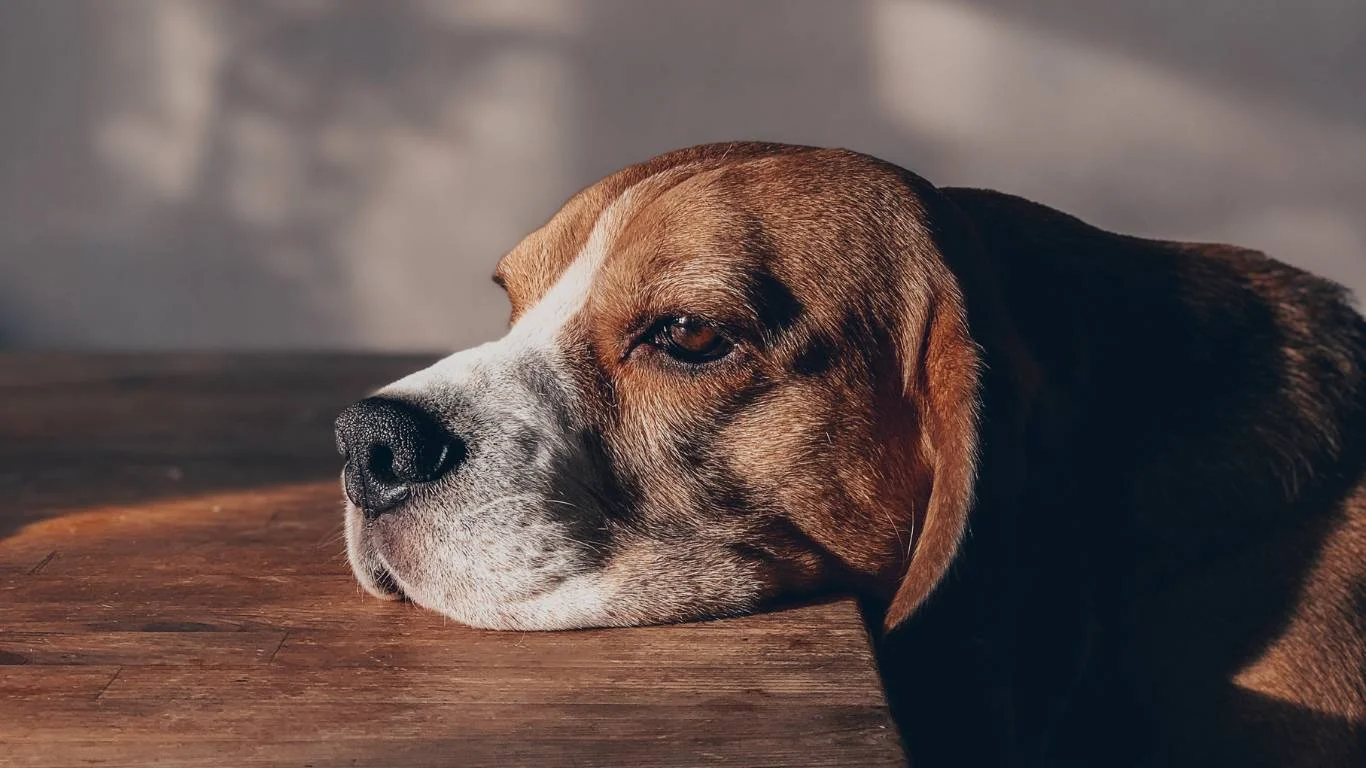
Not all cases of bloating are cause for panic. Sometimes, it’s a minor issue that can be resolved with simple changes, like adjusting your dog’s feeding routine. However, it’s important to know when to act quickly. If you see any of the following signs, don’t wait—contact your vet immediately:
- Severe abdominal distention: If your dog’s belly is abnormally large and hard, it could be a sign of GDV.
- Rapid or shallow breathing: Difficulty breathing could indicate a serious issue.
- Collapsed or weak: If your dog seems lethargic, weak, or unresponsive, this is a serious red flag.
- Unsuccessful vomiting: If your dog is trying to vomit but nothing is coming up, this may point to a blockage or GDV.
If in doubt, always err on the side of caution and reach out to your vet. They can evaluate your dog’s condition and determine whether further treatment is necessary.
How to Prevent Bloating in Dogs: Tips for Dog Owners

As a veterinary assistant with a focus on nutrition, I’ve seen just about every trick in the book when it comes to preventing bloating in dogs. It’s one of those things that can happen unexpectedly, but fortunately, there are steps you can take to help reduce the likelihood of it occurring. In this section, I’ll share some of the practical strategies I’ve recommended to dog owners over the years. These tips not only help prevent bloating but also improve your dog’s overall health and well-being.
1. Feed Smaller, More Frequent Meals
One of the best ways to prevent bloating is to break your dog’s meals into smaller portions throughout the day. Instead of feeding your dog one large meal, consider splitting it into two or three smaller meals. This reduces the likelihood of your dog overeating and minimizes the chances of their stomach becoming overstuffed. I always recommend this method, especially for large or deep-chested breeds that are more prone to bloating. It’s simple, but it works.
2. Invest in a Slow Feeder Bowl
If your dog eats too quickly, a slow feeder bowl can be a game-changer. These bowls are designed with ridges and dividers that force your dog to eat more slowly, preventing them from swallowing too much air while eating. I’ve seen firsthand how effective these bowls are, especially for dogs that tend to scarf down their food in a matter of seconds. Not only does it reduce bloating, but it also helps with digestion and can even prevent vomiting after meals.
3. Avoid Vigorous Exercise After Meals
Just like us, dogs need some time to digest their food. A common mistake I see pet owners make is allowing their dogs to engage in intense physical activity right after eating. This can cause stomach upset and increase the risk of bloating. After meals, try to keep your dog calm and relaxed for about 30 minutes to an hour. A nice walk is great, but avoid running, jumping, or playing fetch until their food has had time to settle.
4. Monitor Food Types and Ingredients
Some foods are more likely to cause bloating than others. High-fat foods, certain proteins, or even specific types of grains can lead to gas buildup in the stomach. It’s important to pay attention to your dog’s diet and see if certain ingredients seem to cause issues. If you notice your dog becoming gassy or bloated after meals, it might be time to switch to a different brand or type of food. In my experience, switching to a food that’s designed for digestive health, with prebiotics and probiotics, can make a huge difference in reducing bloating.
5. Avoid Table Scraps and Overfeeding
We all know how tempting it is to give our dogs table scraps or extra treats, but this can lead to overeating and digestive upset. As a veterinary assistant, I’ve learned that the occasional treat is fine, but regular table scraps can lead to weight gain and bloating. Keep your dog’s treats to a minimum, and make sure they’re getting the appropriate amount of food based on their size, activity level, and age. Overfeeding can cause more harm than good, so always check the recommended serving sizes on your dog’s food package.
What to Do If You Suspect Your Dog is Bloated
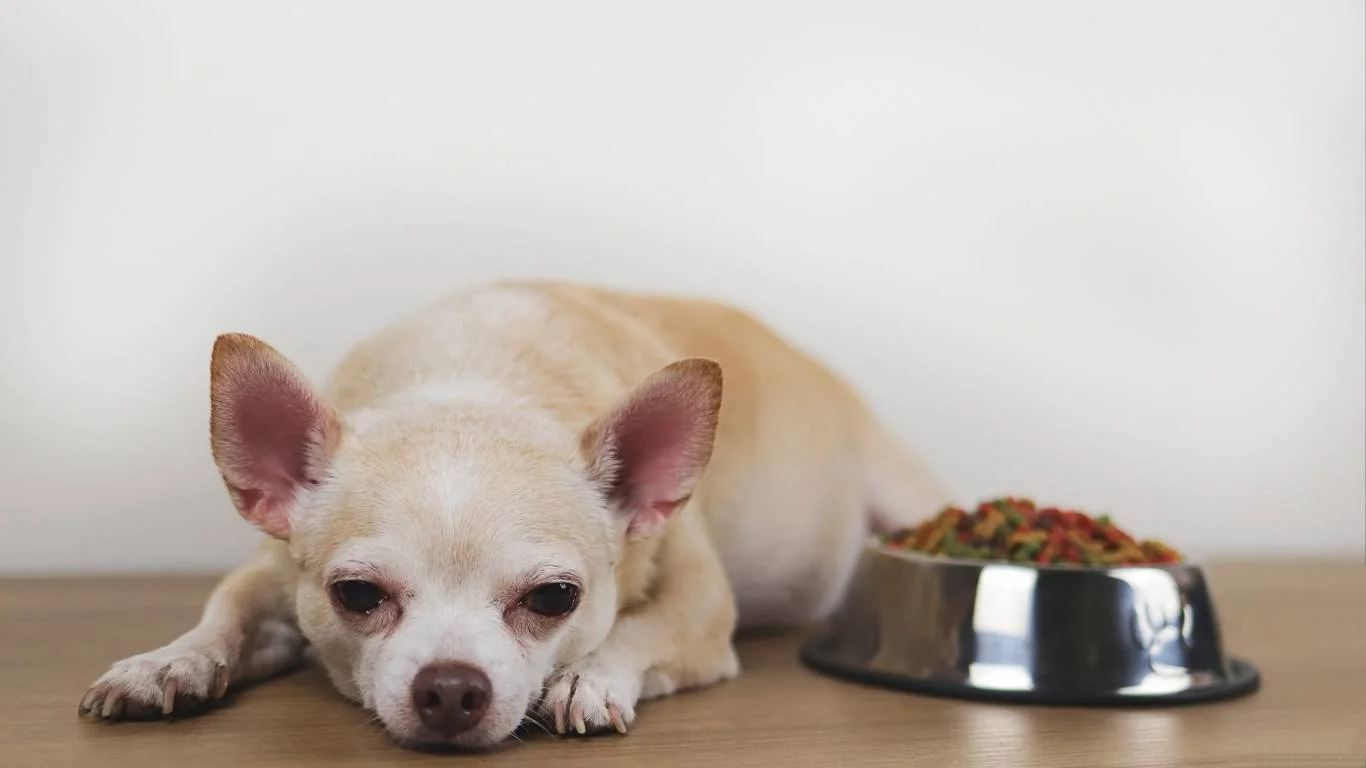
If you suspect your dog is bloated, it’s important to act fast. The earlier you can address the problem, the better the chances of preventing serious complications. Here’s what to do if you think your dog’s belly looks bloated:
1. Monitor Your Dog’s Symptoms Closely
The first step is to observe your dog for any of the common signs of bloating, such as a visibly enlarged belly, excessive drooling, or difficulty breathing. Take note of when the bloating started and whether your dog is showing any other symptoms, like vomiting or restlessness. If your dog’s behavior seems abnormal or they’re in visible distress, it’s time to take action.
2. Don’t Wait – Call Your Veterinarian
If you notice signs of bloating, don’t hesitate to reach out to your vet right away. In cases of gastric dilatation-volvulus (GDV), time is crucial. I’ve seen some dogs go downhill very quickly due to GDV, and the faster treatment is administered, the better the outcome. Contact your vet, describe the symptoms, and follow their instructions. Your vet may recommend bringing your dog in immediately for an evaluation, or they might suggest at-home care depending on the severity of the symptoms.
3. Don’t Try to Treat It Yourself
While it may be tempting to try and treat your dog’s bloating at home with over-the-counter medications or home remedies, this is not a good idea. Bloating can be a serious condition, and incorrect treatment can make things worse. Always defer to your vet’s professional judgment when it comes to managing this type of situation. If your dog is experiencing bloating, especially after meals or during exercise, getting them to the vet for an evaluation is always the best course of action.
4. Prepare for Possible Tests and Procedures
If your vet suspects bloating or GDV, they may need to run tests, such as x-rays or an ultrasound, to get a clear picture of what’s going on inside your dog’s stomach. If GDV is confirmed, your dog will likely need immediate surgery to untwist the stomach and relieve the pressure. While this might sound scary, keep in mind that this is a routine procedure for vets, and the sooner the treatment is provided, the higher the chance of a full recovery.
When Bloating Becomes a Chronic Issue: Seeking Long-Term Solutions
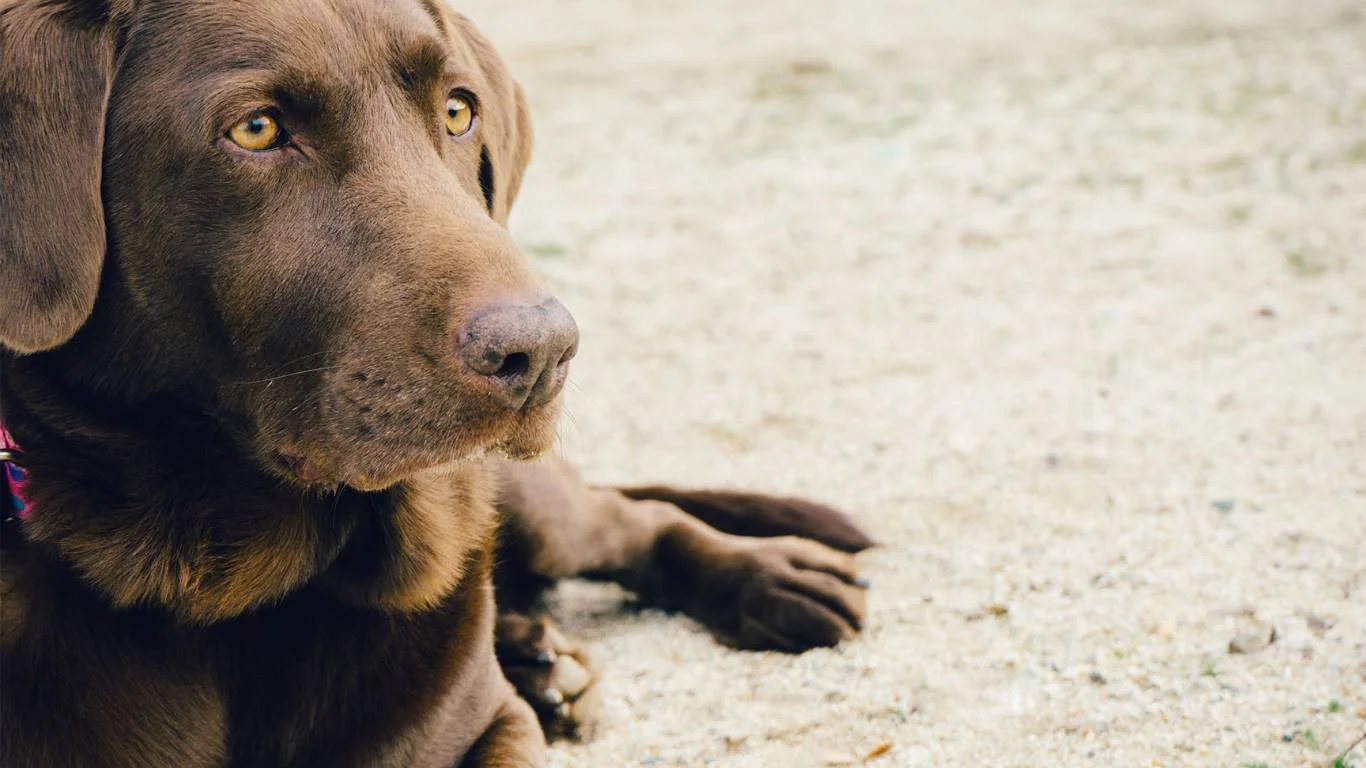
If bloating becomes a recurring problem for your dog, you’ll need to explore long-term solutions to manage the issue. Persistent bloating could be a sign of a more serious underlying condition, such as gastrointestinal disease or even gastric torsion. It’s important to work closely with your vet to identify the root cause and develop a long-term treatment plan.
1. Investigate Underlying Medical Conditions
Some dogs experience chronic bloating due to conditions like gastritis, inflammatory bowel disease (IBD), or other gastrointestinal issues. Your vet may recommend a series of tests to rule out these conditions, such as blood work, stool samples, or imaging tests. If an underlying issue is identified, your vet can prescribe the right treatment plan to address it and prevent further bloating.
2. Consider Prophylactic Surgery for High-Risk Breeds
If your dog is at high risk for GDV due to their breed or previous history of bloating, your vet might recommend a preventive procedure known as gastropexy. This surgery involves attaching the stomach to the abdominal wall to prevent it from twisting. While it’s typically done in high-risk breeds, it’s something to discuss with your vet if bloating is a recurring issue for your dog.
3. Modify Their Diet and Feeding Routine
As mentioned earlier, dietary changes, such as feeding smaller meals more frequently and avoiding certain foods, can go a long way in managing bloating. You might also want to consider consulting a veterinary nutritionist to create a custom feeding plan that supports your dog’s digestive health.
What to Expect During a Veterinary Exam for Bloating

If your dog is showing signs of bloating or any digestive distress, a trip to the vet is essential. But what should you expect during a veterinary exam for bloating? I’ve been part of many of these visits, and I’ve seen how vets approach diagnosing and treating bloating. I want to walk you through what typically happens during such an appointment, so you know what to expect when you bring your dog in for evaluation.
1. Physical Exam
When you arrive at the vet’s office, the first thing that will happen is a physical exam. This is where the vet will palpate (gently press) your dog’s abdomen to feel for any areas of discomfort, swelling, or abnormality. If your dog’s belly feels hard or distended, this is an immediate red flag for bloating or possible GDV. The vet will also check for any signs of pain, which may indicate that the bloating is causing internal stress or damage.
2. Diagnostic Imaging
After the physical exam, your vet may recommend diagnostic imaging to get a clearer picture of what’s going on inside your dog’s body. This could include x-rays or an ultrasound, which are common methods used to detect bloating or any twisting of the stomach. If your dog is suspected of having GDV, the vet may take multiple x-rays from different angles to confirm the diagnosis. These tests are incredibly useful because they allow the vet to identify the presence of gas, fluid, and, if applicable, the rotation of the stomach.
3. Blood Work and Vital Checks
In some cases, the vet might run blood tests to check for signs of dehydration, shock, or other complications that can arise from bloating. GDV, in particular, can cause rapid changes in your dog’s blood pressure and heart rate, so blood work helps the vet assess how well your dog is coping with the situation. Blood tests can also reveal any underlying issues that may have contributed to the bloating, such as infection or inflammation.
4. Immediate Intervention or Surgery
If your vet confirms that your dog is suffering from GDV, immediate intervention is often necessary. In these cases, surgery is typically required to untwist the stomach and relieve the pressure. The procedure is called a gastropexy, and it involves surgically tacking the stomach to the abdominal wall to prevent future episodes of bloating and twisting. While surgery sounds intense, it’s a routine procedure for most experienced vets, and it can save your dog’s life. The earlier it’s performed, the better the chances of a full recovery.
5. Post-Surgery Recovery and Follow-Up
If surgery is performed, your dog will need some time to recover in the hospital before heading home. Post-surgery care usually involves monitoring for signs of infection, providing pain management, and ensuring that your dog starts to eat and drink again once their digestive system is stable. After your dog has healed from the surgery, follow-up appointments will be essential to make sure everything is functioning properly and that there are no complications from the procedure.
When to Worry About Your Dog’s Bloating
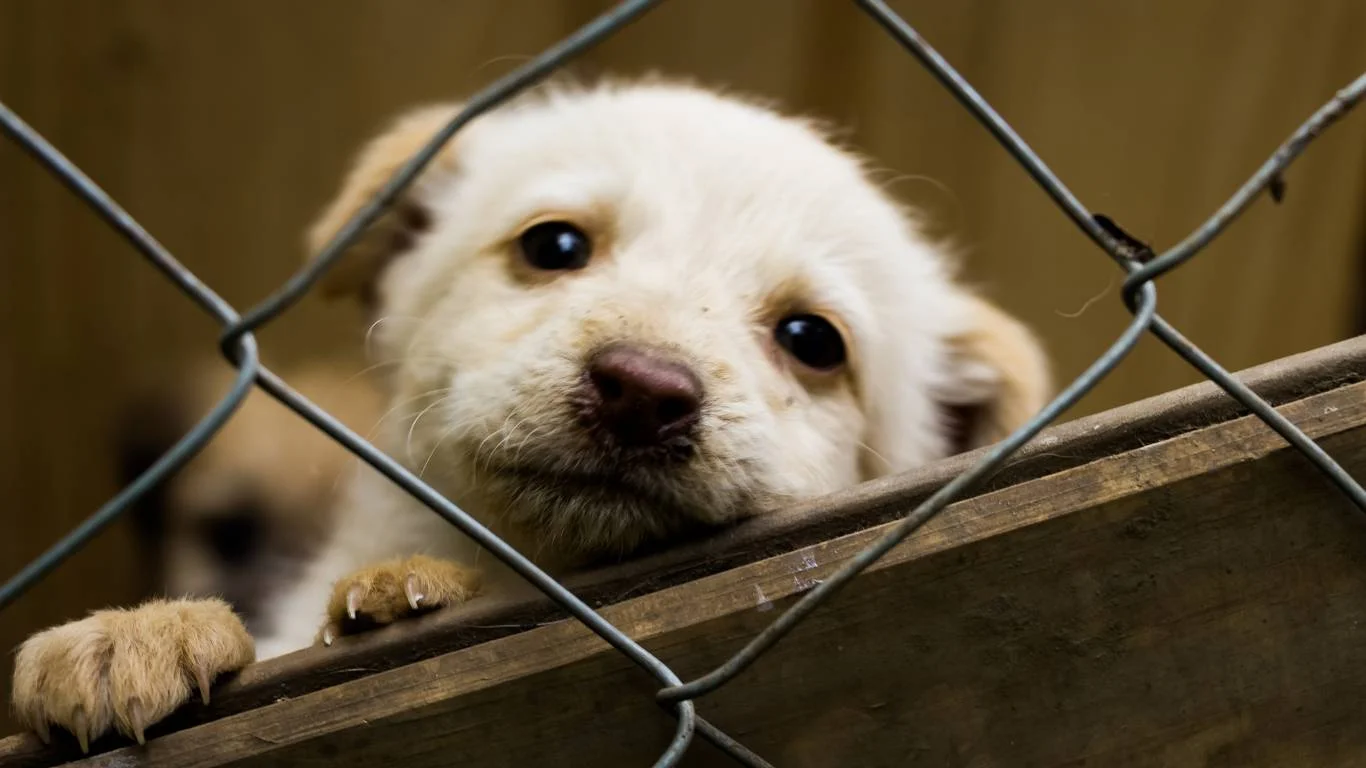
Bloating in dogs can range from a mild discomfort to a life-threatening condition like GDV. As a pet owner, it’s important to recognize when bloating is something to take seriously. In my experience, dogs that show signs of bloating need to be monitored closely, especially if they’re showing any of the following symptoms:
1. Severe Abdominal Distension
If your dog’s belly looks noticeably swollen and firm, this could be a sign of bloating or even GDV. A distended abdomen can indicate that gas or fluid has built up in your dog’s stomach, and the situation can worsen quickly. If your dog’s abdomen is swollen and painful to the touch, don’t hesitate to contact your vet immediately.
2. Difficulty Breathing or Excessive Panting
Bloating, particularly when it leads to GDV, can cause a lot of pressure on the diaphragm and lungs, making it difficult for your dog to breathe. If your dog is having trouble breathing, is panting excessively, or seems unable to get comfortable, these are serious signs that something isn’t right. It’s always best to err on the side of caution and get your dog checked out by a professional.
3. Weakness or Collapse
If your dog seems unusually weak or collapses, this could be due to shock or pain from bloating. GDV can cause a sudden drop in blood pressure, leading to weakness or even collapse. If you notice these symptoms, get to your vet as quickly as possible. Even if it’s not GDV, these signs indicate that your dog is in distress and needs immediate attention.
4. Non-Stop Vomiting or Retching
Another serious symptom of bloating is when your dog tries to vomit but is unable to bring anything up. This could indicate a blockage or that the stomach is severely twisted. Continuous retching without vomiting should be considered an emergency, and you should seek veterinary help right away.
5. Restlessness or Agitation
Dogs that are bloated may become restless, pacing around or having difficulty finding a comfortable spot to lie down. This is usually because of the pain and discomfort they are feeling in their stomach. If your dog seems unusually agitated and can’t settle, it’s worth having them evaluated by a vet to rule out any serious issues.
Additional Resources for Dog Owners
If you’re concerned about your dog’s bloating or digestive health, there are several trusted resources available to help guide you through the process:
- PetMD – Offers expert advice on common pet health issues, including bloating and GDV.
- American Kennel Club (AKC) – Learn about breeds that are at higher risk for bloating and tips on keeping your dog healthy.
- National Institutes of Health (NIH) – For scientific articles and information on veterinary health practices.
Disclaimer
While I’ve shared a lot of personal experience and tips based on my years as a veterinary assistant with a focus on nutrition, this article is for informational purposes only. Always consult your veterinarian for professional medical advice and diagnosis, especially if you suspect your dog is bloated or in any form of distress. The earlier you catch symptoms, the better the chance for a positive outcome. Bloating, particularly in breeds at higher risk for GDV, can be a life-threatening situation, so don’t hesitate to seek emergency veterinary care when needed.
